Yuetian Chen
SOFT: Selective Data Obfuscation for Protecting LLM Fine-tuning against Membership Inference Attacks
Jun 12, 2025



Abstract:Large language models (LLMs) have achieved remarkable success and are widely adopted for diverse applications. However, fine-tuning these models often involves private or sensitive information, raising critical privacy concerns. In this work, we conduct the first comprehensive study evaluating the vulnerability of fine-tuned LLMs to membership inference attacks (MIAs). Our empirical analysis demonstrates that MIAs exploit the loss reduction during fine-tuning, making them highly effective in revealing membership information. These findings motivate the development of our defense. We propose SOFT (\textbf{S}elective data \textbf{O}bfuscation in LLM \textbf{F}ine-\textbf{T}uning), a novel defense technique that mitigates privacy leakage by leveraging influential data selection with an adjustable parameter to balance utility preservation and privacy protection. Our extensive experiments span six diverse domains and multiple LLM architectures and scales. Results show that SOFT effectively reduces privacy risks while maintaining competitive model performance, offering a practical and scalable solution to safeguard sensitive information in fine-tuned LLMs.
Enhancing Sentiment Analysis Results through Outlier Detection Optimization
Nov 25, 2023Abstract:When dealing with text data containing subjective labels like speaker emotions, inaccuracies or discrepancies among labelers are not uncommon. Such discrepancies can significantly affect the performance of machine learning algorithms. This study investigates the potential of identifying and addressing outliers in text data with subjective labels, aiming to enhance classification outcomes. We utilized the Deep SVDD algorithm, a one-class classification method, to detect outliers in nine text-based emotion and sentiment analysis datasets. By employing both a small-sized language model (DistilBERT base model with 66 million parameters) and non-deep learning machine learning algorithms (decision tree, KNN, Logistic Regression, and LDA) as the classifier, our findings suggest that the removal of outliers can lead to enhanced results in most cases. Additionally, as outliers in such datasets are not necessarily unlearnable, we experienced utilizing a large language model -- DeBERTa v3 large with 131 million parameters, which can capture very complex patterns in data. We continued to observe performance enhancements across multiple datasets.
Prompt to GPT-3: Step-by-Step Thinking Instructions for Humor Generation
Jun 22, 2023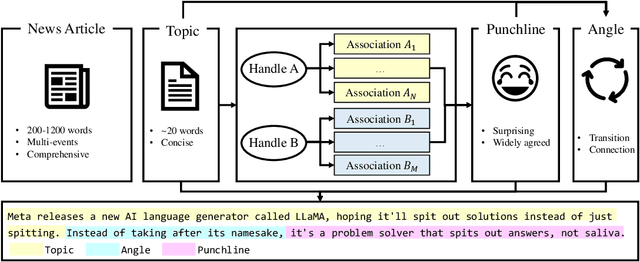
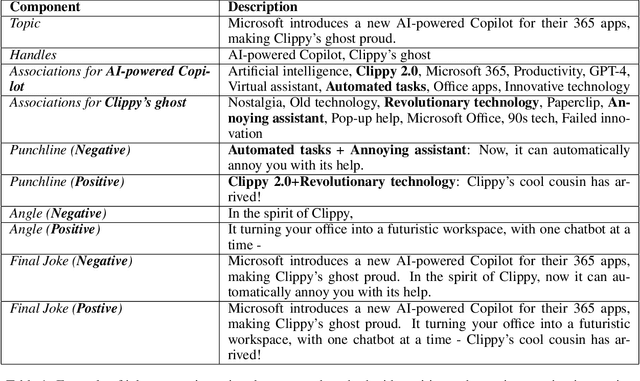
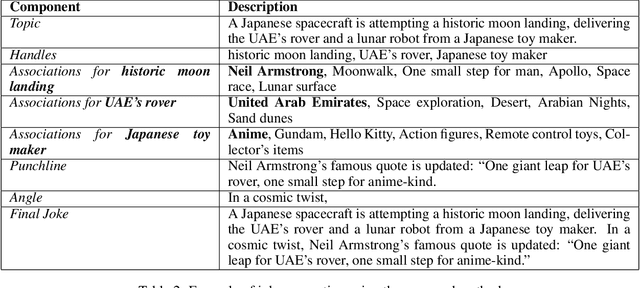
Abstract:Artificial intelligence has made significant progress in natural language processing, with models like GPT-3 demonstrating impressive capabilities. However, these models still have limitations when it comes to complex tasks that require an understanding of the user, such as mastering human comedy writing strategies. This paper explores humor generation using GPT-3 by modeling human comedy writing theory and leveraging step-by-step thinking instructions. In addition, we explore the role of cognitive distance in creating humor.
Visual Story Generation Based on Emotion and Keywords
Jan 07, 2023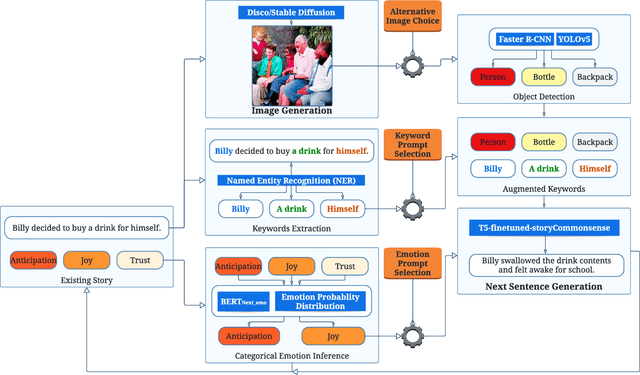
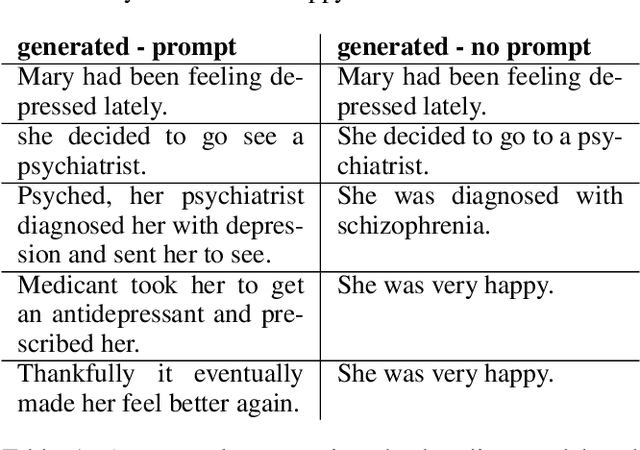
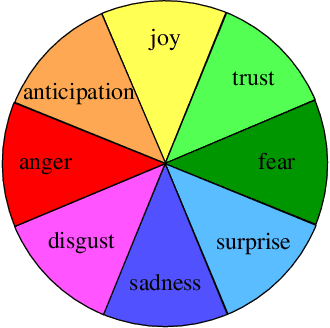
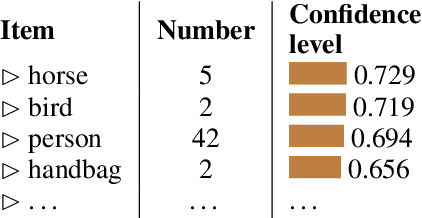
Abstract:Automated visual story generation aims to produce stories with corresponding illustrations that exhibit coherence, progression, and adherence to characters' emotional development. This work proposes a story generation pipeline to co-create visual stories with the users. The pipeline allows the user to control events and emotions on the generated content. The pipeline includes two parts: narrative and image generation. For narrative generation, the system generates the next sentence using user-specified keywords and emotion labels. For image generation, diffusion models are used to create a visually appealing image corresponding to each generated sentence. Further, object recognition is applied to the generated images to allow objects in these images to be mentioned in future story development.
 Add to Chrome
Add to Chrome Add to Firefox
Add to Firefox Add to Edge
Add to Edge